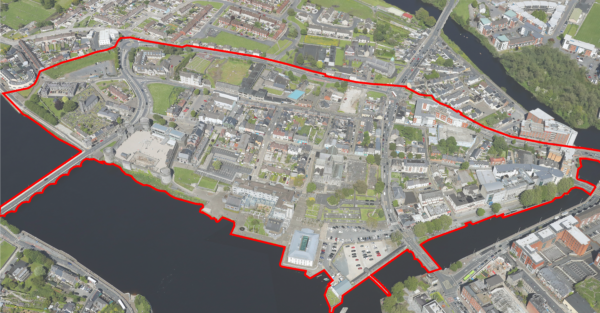THRIVE – the Town Centre First Heritage Revival Scheme – will support local authorities and their citizens to re-imagine town centres and to transform publicly-owned vacant or derelict heritage buildings within those town centres through renovation, renewal, and adaptive reuse.
A heritage building under the scheme is classified as structures that forms part of the architectural heritage and has unique architectural, historical, archaeological or artistic qualities, or its links to the cultural and economic history of a place.
To qualify for a THRIVE grant to renovate a heritage building, the building must be in public ownership and have been identified through locally developed plans and public consultation to establish most viable reuse for the building renewed.
The study area is defined by the Walled Medieval Englishtown, featuring a rich tapestry of historical landmarks. Among these treasures are the 13th century King John’s Castle, the venerable St. Mary’s Cathedral, the Bishop’s Palace from the 1740s, the Alms Houses dating back to 1691, and iconic structures such as the Limerick City Exchange. Central to this historical narrative is Nicholas Street, serving as a vital spine that connects many of these sites and stands as a potential focal point for tourist activity in the City.
The southern expanse of this study area features the presence of the Limerick City and County Council Offices along with the Court House, emphasising the civic importance of King’s Island.
Extending to the outer core, notable locations include the historic zone of Verdant Place, the former Convent lands, the residential area of the Abbey, and a blend of uses around George’s Quay and Abbey Bridge.
The study area is bounded by the River Shannon to the west and north, and the Abbey River to the east and south. Island Road marks the eastern boundary and key connections to the city centre and residential zones are facilitated by various bridges.
Ongoing regeneration initiatives, dating back to the late 1980s aim to safeguard and enrich the area’s historical and architectural significance.




